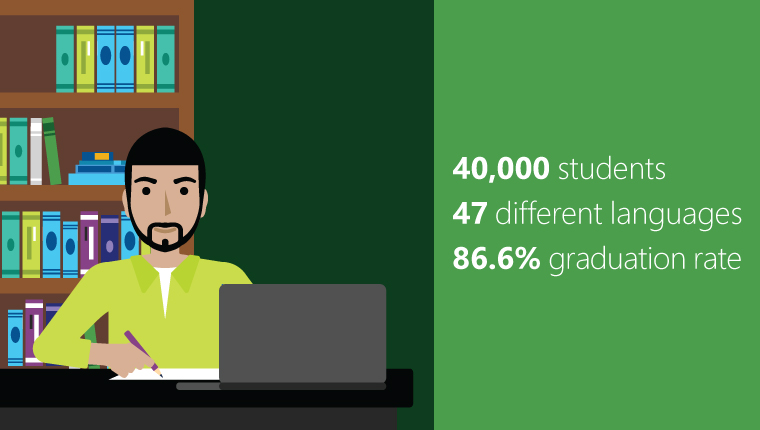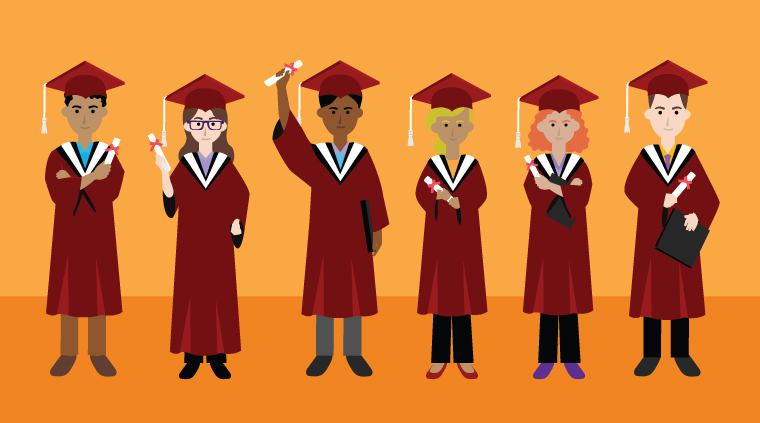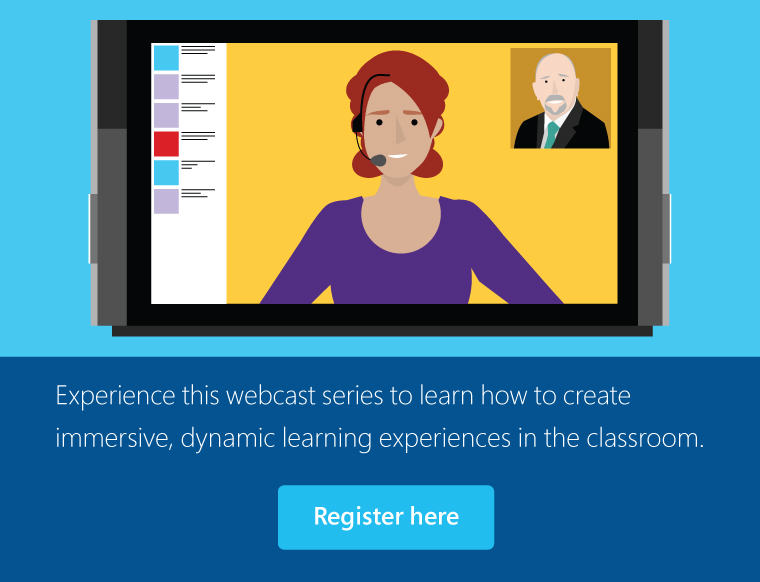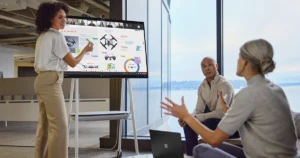
How St. Lucie Schools fosters communication and appropriate use
| Focus on: Empower Employees, Optimize Operations, Engage Customers |
Overlooking the Atlantic Ocean, St. Lucie County Public Schools is a K-12 district resting along Florida’s eastern coast. Located two hours south of Orlando and two hours north of Miami, St. Lucie residents enjoy all the sunshine, sea life, and tropical weather of the neighboring destination cities without the massive influx of tourists every year.
The school district’s 42 sites include 17 elementary schools, four middle schools, five high schools, and one virtual school, enrolling just under 40,000 students and employing 5,463 staff members. The mission of St. Lucie Public Schools is to “ensure all students graduate from safe and caring schools, equipped with the knowledge, skills, and desire to succeed,”—certainly an inspiring academic vision for a district as diverse as this one.
St. Lucie County’s student population is 36% white, 30% African-American, 29% Latino, 4% multiracial, and 2% Asian-American, with a total of 47 different languages spoken throughout the district, including English, Spanish, and French Creole. The district provides around 72% of students with free and reduced lunch, and its 86.6% graduation rate moved the district from 45th to 13th in the state of Florida.

Recently, the school district has been exploring the impact Skype for Business and appropriate use training can have on achieving their goal of empowering St. Lucie students to have successful education experiences in St. Lucie schools and beyond.
Engaging and empowering students through one-to-one programsTerence O’Leary has been working at St. Lucie Public Schools for 25 years and has served as the CIO for the district for the last 12 years. As CIO, his role is to identify technology investments that can improve learning outcomes for students—both in the classroom and beyond.
Throughout the district, all schools are equipped with computer labs and workstations, and each classroom contains eight computers. But O’Leary and administrators know learning doesn’t stop when students leave school grounds. To create more opportunities for students outside of the classroom, St. Lucie Public Schools chose two high schools to roll out a pilot one-to-one program. As part of the program, each student received a laptop for the entire school year and was given access to dual enrollment and credit recovery courses.
“We know that while we only have our students for seven and a half hours a day, really learning is anytime, anywhere,” says O’Leary. “We truly believe in that. So giving students access anytime, anywhere was where the selection of Microsoft products like Office 365 and Skype came in as a strategy.”
With these laptops, students gain valuable experience with the education and communication tools that all of Florida’s state colleges and universities use in their classrooms and lecture halls. From becoming more comfortable with familiar Microsoft applications to exploring the capabilities of virtual discussion spaces, St. Lucie’s one-to-one program effectively prepares high school students for a seamless transition to higher learning. But access is only part of St. Lucie’s commitment to improving student outcomes through technology.

Revolutionizing collaboration opportunities and education experiences with Skype
At all 42 St. Lucie Public School locations, all students K-12 have access to a range of Office 365 productivity tools. Additionally, all students in grades 6-12 have email addresses and full access to the Office 365 suite.
As O’Leary and St. Lucie Public Schools began rolling out Office 365, students became extremely drawn to Skype’s collaboration and learning capabilities—especially the ability to interact with one of their peers, or a group of peers, via video. Students could brainstorm for a group assignment with classmates or talk through a difficult science report with Skype’s intuitive features. Naming these one-to-one and group interactions #SkypeUp, St. Lucie students started leveraging the technology to take ownership of their learning opportunities.
“Whether it be lunchtime or after school, we saw many kids gathered together around their computers collaborating on school projects or helping each other on algebra homework,” says O’Leary. “And it didn’t require them to meet up at a library or a facility. They were completing their assignments via Skype.”
Skype video also expanded the reach of the classroom. Now, lessons can be recorded so that students can review information after school and reference them for test review. St. Lucie Public Schools also outfitted its buses with Wi-Fi capabilities so students could Skype on their way to and from school to get an algebra homework question answered quickly. For students serving in-school suspensions, Skype allows them to participate in their classrooms remotely—effectively addressing their behavior without negatively impacting their education.
But St. Lucie students attending traditional school settings aren’t the only ones benefiting from the capabilities of Skype.
Approximately 280 full-time students and part-time students in the St. Lucie Public Schools district attend Mosaic Digital Academy, a fully-staffed K-12 virtual school with a blended model. For these students—especially student athletes with time-consuming practice schedules, students with medical conditions and special needs, and home-schooled students—Skype was extremely beneficial.
“From an educator’s perspective, our virtual schools saw it as a way to take the traditional standard education approach and transform it into a 21st century approach through video learning, white-boarding, and collaborative effort, along with the other products included in Microsoft 365,”says O’Leary.
Promoting appropriate use through training and support
Technology in education has the potential to positively impact students of all learning styles and abilities. But for many institutions, concerns about bullying and other inappropriate uses are big barriers to considering new technology. As St. Lucie Public Schools implemented tools like Office 365 and Skype, administration and staff took proactive measures to establish use guidelines and ensure students and faculty weren’t abusing the technology at their disposal.

School deans and principals developed a protocol for proper Skype use for teachers and students to follow. Teachers and students attended regular meetings to learn how to use Microsoft tools, ask questions, and offer feedback. Through Yammer, teachers and administrators could see if students were using the technology for bullying or gossip and immediately responded with an appropriate use case.
“It’s a mindset. Do you want to be reactive or proactive? We really pushed forth a very large appropriate use initiative for the tools and technology we had in place,” says O’Leary. “Before we handed out access to the devices and tools, all parents and students were required to go through various appropriate use sessions with all the deans within the school.”
By including everyone—students, teachers, and administrators—on Yammer and enforcing appropriate use in real time, St. Lucie Public Schools began seeing a behavioral change at every level. Now, many students are promoting appropriate use among their peer groups, voluntarily offering advice to their classmates and encouraging a cultural shift that strengthens St. Lucie’s overall mission.
Driving digital transformation beyond St. Lucie classrooms
St. Lucie Public Schools is a prime example of the far-reaching impact IT can have, both in the classroom and beyond, when you shift your mindset and take a proactive approach.
For instance, in addition to improving education outcomes, the one-to-one program acts as an economic development tool for parents and families. After the housing crash, many parents in St. Lucie County lost their job security and stability. For these families, the laptop provided by St. Lucie County Public Schools became the only device with Internet access in the house.

Additionally, providing these students and families with access to the latest technology ultimately changes the culture and empowers students to succeed in the classroom and beyond. “It didn’t just change student opportunity, but it changed the culture of the building,” says O’Leary. “It was a much more collaborative environment with information shared between students and teachers, between teachers and administration, and students and administration at the schools.”
Related Content
- Get the Modern Note Taking 101 e-book
- Explore more Real Stories of Digital Transformation





